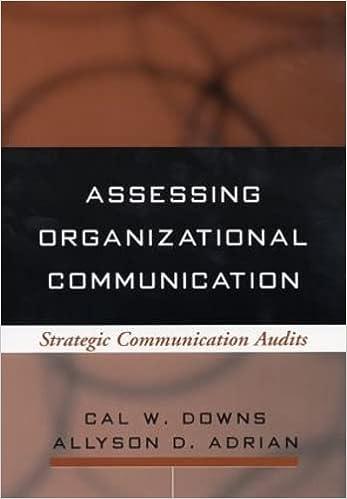Page Setup L Please complete the following problems using SPSS. Interpret all results at the .05 significance level. Record your answers to the questions below. 78 1. For those at high risk of developing Alzheimer's disease (a disorder in adults characterized by problems with memory and thinking), a major goal is to delay developing the disease for as long as possible. A researcher is interested in how a healthy lifestyle might impact the onset of No Treatment Exercise Diet Alzheimer's disease. He gathers 30 individuals who have a very 85 86 high likelihood of developing Alzheimer's and assigns each to a 66 84 86 different treatment condition. 10 receive no treatment, 10 receive 77 76 75 a personal trainer who assures that they are exercising daily, 10 89 95 86 65 83 74 are assigned a dietician who carefully monitors the participant's 77 75 meals and assures that they are eating a balanced diet very high in 78 86 84 nutrients. The researcher then follows the study participants for 69 85 decades and records the age at which each person develops 79 87 75 Alzheimer's. The data follows: 78 96 A. How many independent variables are there? 73 86 65 Yes / No Are the same participants included in each condition/time point? (Indicate 1) What test would you perform? (Indicate 1) Independent Samples T-test One-way (Independent. Samples) ANOVA Repeated Measures ANOVA Paired Samples T-test Factorial ANOVA B. Define: Dependent Variable: Independent Variable: Levels of the independent variable (options within the overall category) : & C. Fill in the following values to use for your interpretation below) F value: Overall ANOVA p-value (8): Mean No Treatment: Mean Exercise Mean Diet Pairwise Comparisons: No Treatment vs. Exercise No Treatment vs. Diet Exercise vs. Diet p.value D. Interpret these results, The analysis showed a (Indicate 1) Significant/ non sinificant effect of F2,271 P on Past 2014 949 words B Problem Set N3 Post hoc testing revealed that: On average, participants who received the exercise treatment were indicate one) younger older when they developed Alzheimer's disease (M= than participants who did not receive treatment (M= and/but this difference was (Indicate 1) not significant / significant (p On average, participants who received the dietutritional treatment were (indicate 1) younger /_older when they developed Alzheimer's disease (M= than participants who did not receive treatment (M= Land/but this difference was (Indicate 1) not significant / significant (p . On average, participants who received the exercise treatment were (indicate 1) younger / older when they developed Alzheimer's disease (M= than participants who received the dietutritional treatment ), and/but this difference was (Indicate 1) not significant/ significant (p= IM Takeaway message: Page Setup L Please complete the following problems using SPSS. Interpret all results at the .05 significance level. Record your answers to the questions below. 78 1. For those at high risk of developing Alzheimer's disease (a disorder in adults characterized by problems with memory and thinking), a major goal is to delay developing the disease for as long as possible. A researcher is interested in how a healthy lifestyle might impact the onset of No Treatment Exercise Diet Alzheimer's disease. He gathers 30 individuals who have a very 85 86 high likelihood of developing Alzheimer's and assigns each to a 66 84 86 different treatment condition. 10 receive no treatment, 10 receive 77 76 75 a personal trainer who assures that they are exercising daily, 10 89 95 86 65 83 74 are assigned a dietician who carefully monitors the participant's 77 75 meals and assures that they are eating a balanced diet very high in 78 86 84 nutrients. The researcher then follows the study participants for 69 85 decades and records the age at which each person develops 79 87 75 Alzheimer's. The data follows: 78 96 A. How many independent variables are there? 73 86 65 Yes / No Are the same participants included in each condition/time point? (Indicate 1) What test would you perform? (Indicate 1) Independent Samples T-test One-way (Independent. Samples) ANOVA Repeated Measures ANOVA Paired Samples T-test Factorial ANOVA B. Define: Dependent Variable: Independent Variable: Levels of the independent variable (options within the overall category) : & C. Fill in the following values to use for your interpretation below) F value: Overall ANOVA p-value (8): Mean No Treatment: Mean Exercise Mean Diet Pairwise Comparisons: No Treatment vs. Exercise No Treatment vs. Diet Exercise vs. Diet p.value D. Interpret these results, The analysis showed a (Indicate 1) Significant/ non sinificant effect of F2,271 P on Past 2014 949 words B Problem Set N3 Post hoc testing revealed that: On average, participants who received the exercise treatment were indicate one) younger older when they developed Alzheimer's disease (M= than participants who did not receive treatment (M= and/but this difference was (Indicate 1) not significant / significant (p On average, participants who received the dietutritional treatment were (indicate 1) younger /_older when they developed Alzheimer's disease (M= than participants who did not receive treatment (M= Land/but this difference was (Indicate 1) not significant / significant (p . On average, participants who received the exercise treatment were (indicate 1) younger / older when they developed Alzheimer's disease (M= than participants who received the dietutritional treatment ), and/but this difference was (Indicate 1) not significant/ significant (p= IM Takeaway message








